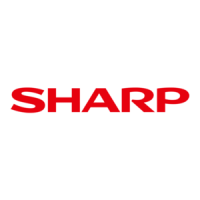
Do you have a question about the Sharp PC-A150 and is the answer not in the manual?
| Operating System | MS-DOS 5.0 |
|---|---|
| Display | LCD |
| Display Type | LCD |
| Resolution | 640x480 |
| Ports | Serial, Parallel |
| Battery | NiCad |
Outlines FCC regulations and compliance for equipment operation in the USA.
Details FCC Part 68 compliance for modems and usage guidelines with telephone networks.
Provides Industry Canada certification information and connection requirements.
Information on service inquiries and copyright compliance for users in Australia.
Important electrical connection information and UK telecommunications approval for equipment.
States compliance with EU directives for electromagnetic compatibility and low voltage.
Covers general handling, servicing, and environmental considerations for computer safety.
Details precautions for handling, charging, discharging, and storing battery packs to prevent hazards.
Advises on safe installation and usage of the modem, especially regarding telephone lines and storms.
Step-by-step instructions for powering up the computer for the first time.
Guides through the initial configuration process for the Windows 98 operating system.
Explains the correct procedure for safely turning off the computer.
Describes options for powering the computer using AC adapter or rechargeable battery.
Details methods for resetting the computer during software or hardware lock-ups.
Explains how to operate the glide pad and keyboard for user interaction.
Instructions for connecting and using an external floppy disk drive.
Guidance on using, checking levels, charging, and initializing battery packs.
How to configure settings to conserve power, including suspend modes.
General guidelines for connecting devices like printers, monitors, and audio equipment.
Procedures for installing and using PC cards and optional external CD-ROM drives.
Instructions for connecting and using keyboard, mouse, and external display.
Connecting audio output, microphones, and USB devices.
Steps to connect printers and serial devices.
Setting up and using wireless communication via the IR port.
Instructions for connecting and using the internal modem for data and fax.
Guidance on setting, deleting, and managing user and supervisor passwords.
Measures to protect against viruses and physical theft using the security slot.
How to access and navigate the system's setup utility for configuration.
Details on main, advanced, security, and power settings within the setup utility.
Instructions for cleaning and maintaining the computer's components.
Provides detailed technical specifications for the computer hardware.
Guides users through identifying and resolving common hardware and software issues.
Solutions for problems related to startup, display, peripherals, and communication.
